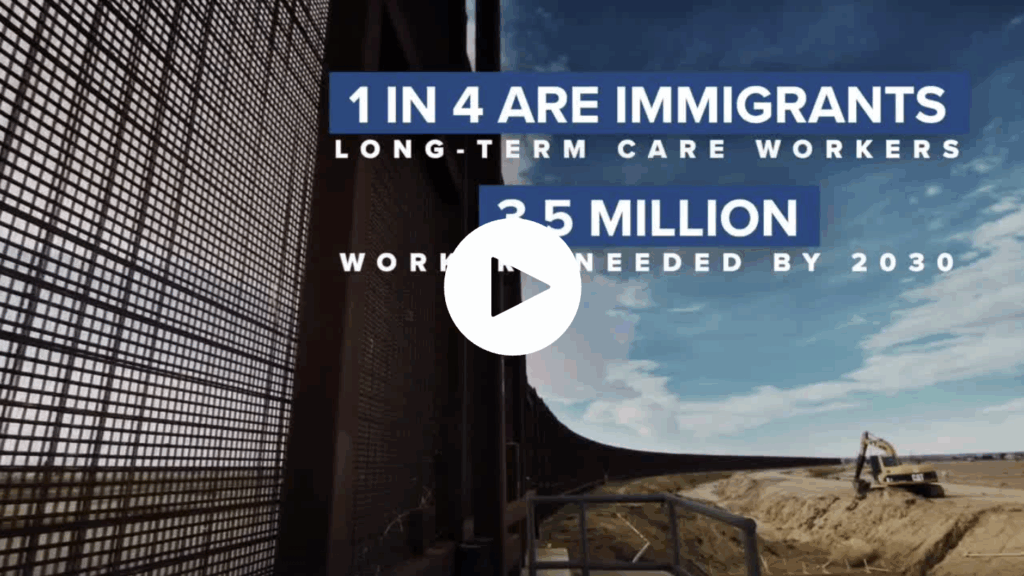Quick Guide
Overview
The U.S. is facing a growing senior care crisis. Staffing shortages in long-term care threaten the health, dignity, and safety of aging Americans. At the heart of this crisis is a workforce stretched too thin to meet rapidly rising demand.
Immigrant workers are a vital part of the solution—not because this is about immigration, but because it’s about ensuring our parents, grandparents, and neighbors receive the care they deserve.
This is not an immigration issue. It’s a senior care issue. And it’s American families who are at risk if we don’t act.

Key Facts
- The U.S. will need 3.5 million more healthcare workers by 2030.
- The 65+ population is expected to grow by 50% by 2050.
- 1 in 4 long-term care workers is an immigrant.
- Immigrants fill over 30% of nursing home support roles and 27.5% of direct care roles.
- More than 50% of nursing home residents depend on Medicaid for their care.
The Real Issue: A Fragile Senior Care Infrastructure
Staffing shortages in senior living centers, nursing homes, and home-based care are already pushing the system to its limits. Nursing homes in particular—many of which serve low-income seniors—are under double pressure from chronic workforce gaps and potential Medicaid funding cuts. These facilities don’t have the resources to compete for workers without policy support. Without a reliable workforce, care suffers. Families are left scrambling. Seniors are left vulnerable.
Immigrant Workers: Part of a Practical, American Solution
Immigrant caregivers are already an essential part of the senior care workforce. They provide stability, reduce turnover, and enable facilities to keep operating. But this conversation isn’t about immigration policy for its own sake—it’s about how we protect American seniors.
Supporting these workers means supporting American families.

Policy Recommendations
To strengthen the American senior care system, policymakers must:
- Expand pathways for qualified immigrant healthcare workers to legally work in the U.S.
- Ensure long-term care facilities, especially those relying on Medicaid, have access to a sustainable labor pool.
- Treat workforce stabilization as a core part of elder care reform, not a side issue.
Bottom Line
If we fail to address the long-term care staffing crisis, it’s not immigrant workers who suffer—it’s aging Americans. This is not an immigration debate. It’s a test of how we care for our own.
Updated on September 10, 2025


